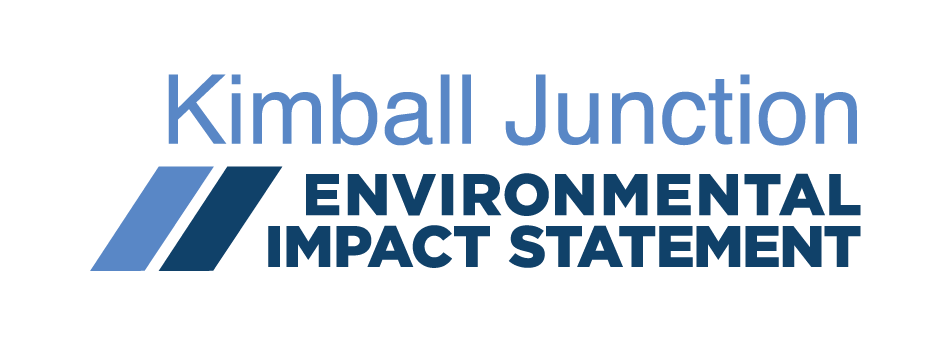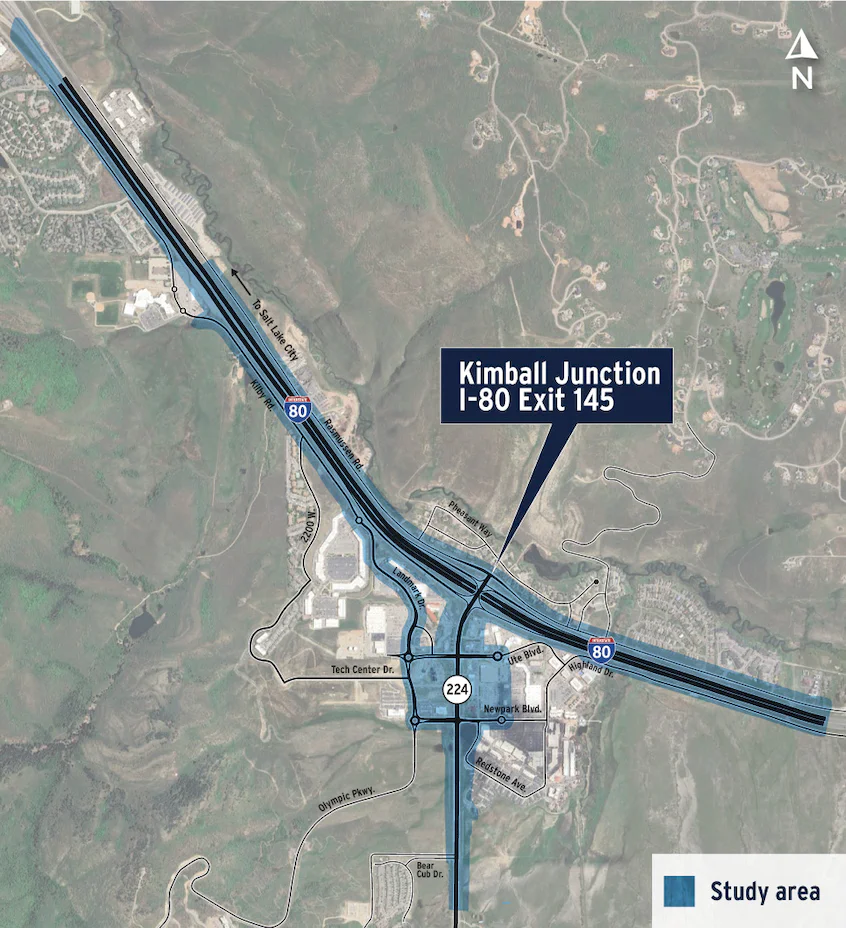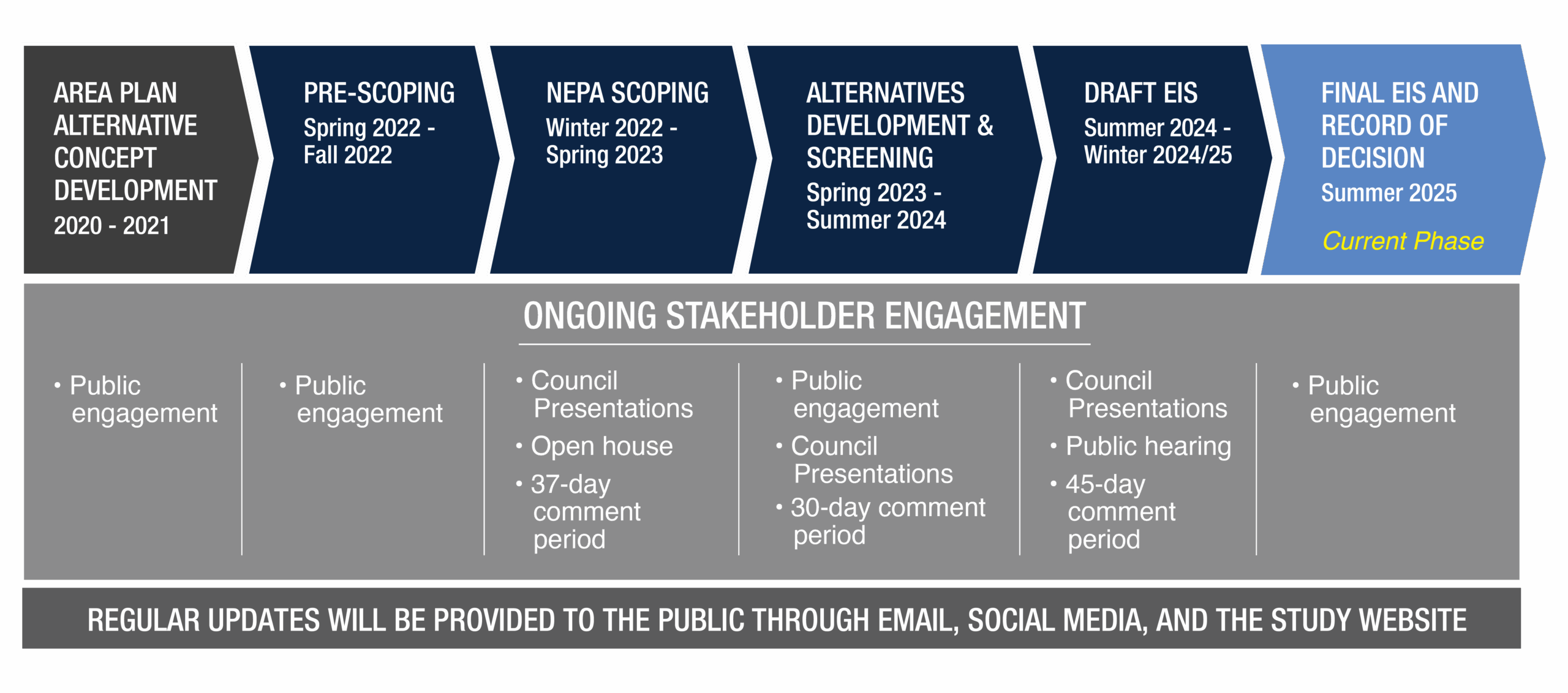UDOT has completed an Environmental Impact Statement (EIS) to improve regional and local mobility at the Interstate 80 (I-80) and SR-224 interchange at Kimball Junction and on SR-224 from Kimball Junction through the Olympic Parkway intersection in Summit County, Utah.
After evaluating the information in the Draft EIS, the project file, and public and agency input to date, UDOT has identified Alternative C: Intersection Improvements with Pedestrian Enhancements as the selected alternative in the Final EIS and Record of Decision.
Study Overview
UDOT’s mission is to keep Utah moving while enhancing quality of life through transportation improvements in our state. UDOT conducted an Environmental Impact Statement (EIS) to improve regional and local mobility at the Interstate 80 (I-80) and SR-224 interchange at Kimball Junction and on SR-224 from Kimball Junction through the Olympic Parkway intersection in Summit County, Utah.
The purpose of the EIS is to address transportation-related mobility for all users of the Kimball Junction area. The alternative selected in the EIS is: Alternative C: Intersection Improvements with Pedestrian Enhancements.
Key features of Alternative C include:
- I-80 Ramps: Additional lane to the eastbound off-ramp to SR-224, a dedicated right turn lane to southbound SR-224, and an additional lane on the eastbound on-ramp from SR-224.
- SR-224 Intersections: Improvements at Ute Boulevard and Olympic Parkway, including added turn lanes, additional through travel lanes, and bike lanes.
- Roundabouts & Local Roads: A second lane was added to the southern approach of the Ute Boulevard/Landmark Drive roundabout, and a new lane from SR-224 on Newpark Boulevard to the Olympic Parkway roundabout.
- Pedestrian & Bicycle Improvements: New east-west pedestrian underpass under SR-224 near Ute Boulevard, new buffered bike lanes from Olympic Parkway to Rasmussen Road, and trail connections to the pedestrian undercrossing.
Benefits of Alternative C:
- Greatest reduction in travel delay and faster travel speeds in the study area during AM & PM peak periods
- All intersections in the study area would operate at acceptable levels of service
- Shortest I-80 off-ramp vehicle queue lengths
- More reasonable expenditure of funds for the anticipated operational benefits
Study Area
The needs assessment evaluation area includes the I-80 and SR-224 interchange at Kimball Junction and SR-224 from Kimball Junction through the two at-grade intersections on SR-224 at Ute Boulevard and Olympic Parkway. The evaluation area also extends from milepost (MP) 143.2 to MP 145.6 on I-80.
Current Phase
Revised: 8/29/25
Final Environmental Impact Statement (FEIS) and Record of Decision (ROD)
UDOT has prepared an Environmental Impact Statement (EIS) to improve transportation-related safety and mobility at the I-80 and SR-224 interchange and on SR-224 from Kimball Junction through the Olympic Parkway intersection.
UDOT has selected Alternative C: Intersection Improvements with Pedestrian Enhancements in the Final Environmental Impact Statement and Record of Decision, published in August 2025. UDOT’s decision to approve this alternative is based on the information presented in the Draft and Final EISs and supporting technical analysis and documents, approved local and regional planning documents, the associated project file, and input received from the public and interested local, state, and federal agencies.
The ROD constitutes UDOT’s approval of Alternative C. This ROD describes the basis for the decision, describes the alternatives considered, and documents the mitigation measures that will be implemented.
The study team followed the EIS process established by the National Environmental Policy Act (NEPA). This includes:
- Gathering input from the public, agencies, and other stakeholders.
- Establishing a purpose and need for the project.
- Developing a broad range of potential transportation solutions.
- Evaluating environmental impacts of those proposed solutions.
- Selecting an alternative that best meets the needs.
Contact Us
For more information on UDOT projects underway in the Kimball Junction area, please contact the project team through one of the ways listed below.
The environmental review, consultation, and other actions required by applicable Federal environmental laws for this project are being, or have been, carried out by UDOT pursuant to 23 U.S.C. 327 and a Memorandum of Understanding dated May 26, 2022, and executed by Federal Highway Administration and UDOT.


